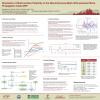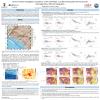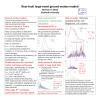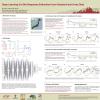Poster #197, Ground Motions
Deterministic ground motion simulations with shallow crust nonlinearity
Poster Image:

Poster Presentation
2020 SCEC Annual Meeting, Poster #197, SCEC Contribution #10718 VIEW PDF
sediment cyclic response using a multi-axial constitutive model formulated within the framework of bounding surface plasticity in terms of total stress and implemented in a high-performance computing finite element code. In all simulations, we extract the small-strain material properties from the Southern California Earthquake Center (SCEC) Community Velocity Model CVM-S4.26 (using its optional geotechnical layer) and constrain the nonlinear soil model parameters using empirical modulus reduction curves and ultimate shear strength. Our nonlinear simulations suggest that peak ground displacements within the valley increase relative to the linear case, while peak ground accelerations can increase or decrease, depending on the frequency content of the excitation. The comparisons of our simulations against hybrid 3D-1D site response analyses suggest the inadequacy of the latter to capture the complexity of fully 3D simulations.
SHOW MORE
SHOW MORE

















































